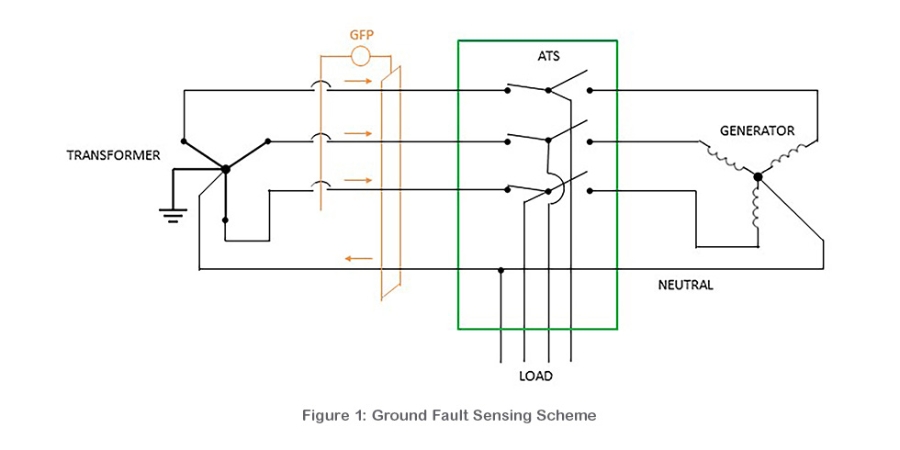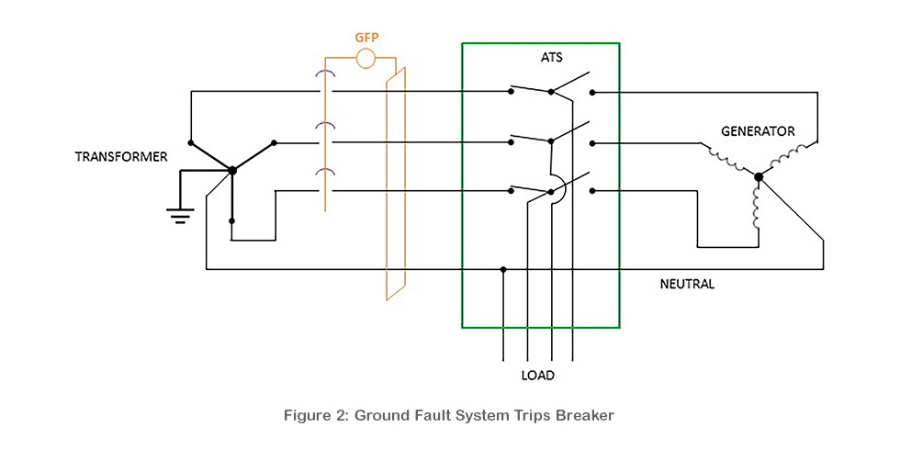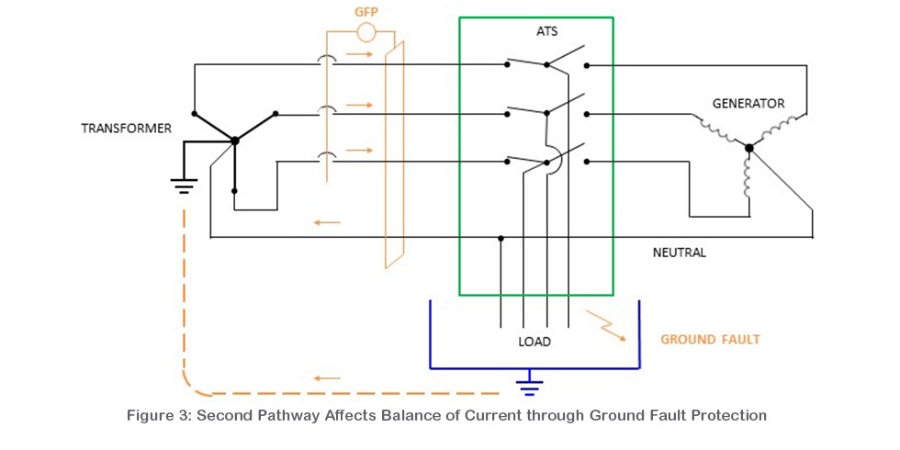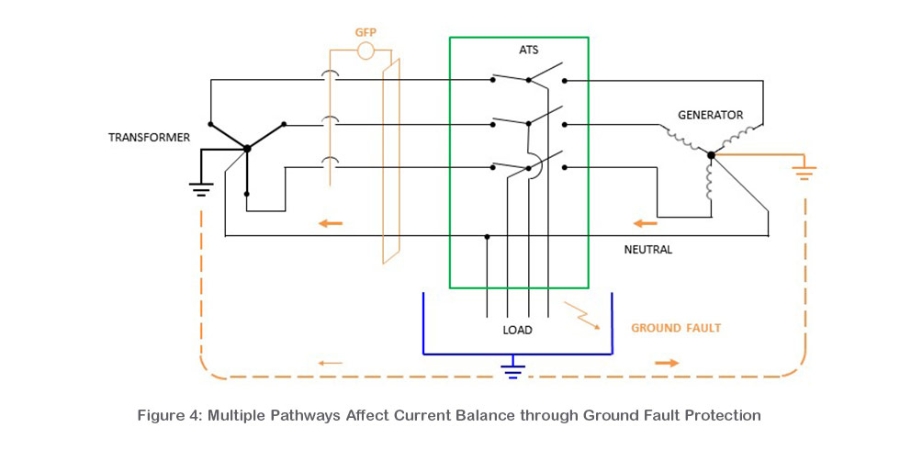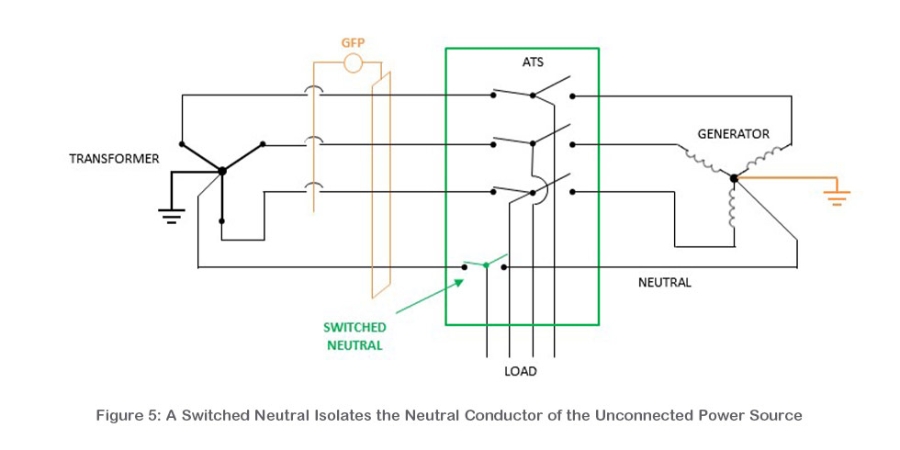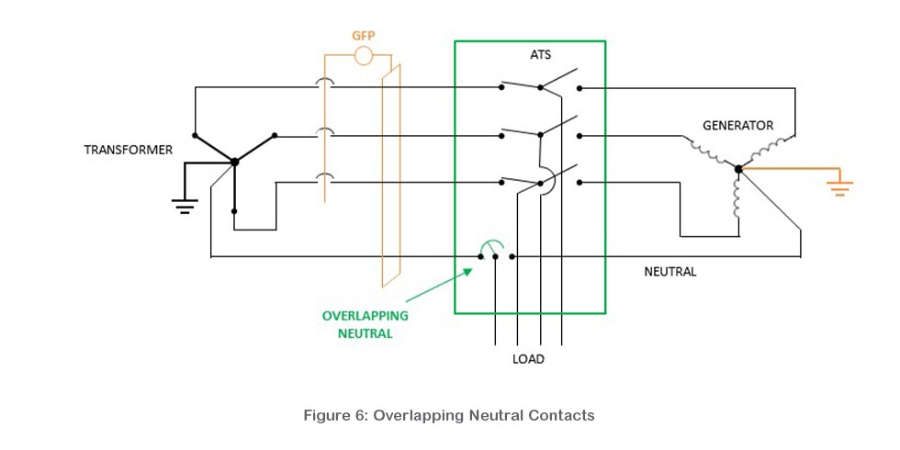Ground faults are unintended electrically conductive connections between an ungrounded conductor and normally noncurrent-carrying conductors, metallic objects such as enclosures, or earth. By energizing items that people can touch, they can create a safety hazard. When they subsist at levels below the fusing current, they can also create a fire hazard.
Article 230.95 of the National Electrical Code® requires ground fault sensing systems on electrical services exceeding 1000 Amps, 150 to 600 Volts. This article summarizes some common considerations for mitigating ground faults in backup power systems.
Ground fault sensing systems monitor whether the amount of current flowing into a circuit through phase conductors matches the amount of current flowing out (Figure 1).
Article 230.95 of the National Electrical Code® requires ground fault sensing systems on electrical services exceeding 1000 Amps, 150 to 600 Volts. This article summarizes some common considerations for mitigating ground faults in backup power systems.
Ground fault sensing systems monitor whether the amount of current flowing into a circuit through phase conductors matches the amount of current flowing out (Figure 1).



